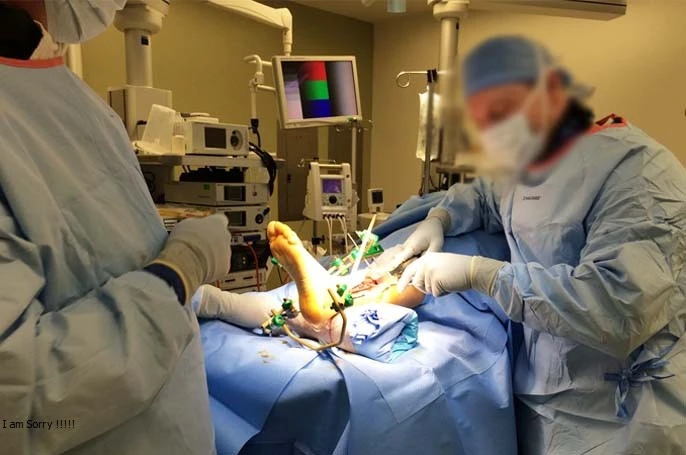Arthroscopic Foot Surgery Insights
Arthroscopic foot surgery stands as a minimally invasive surgical procedure employed to both diagnose and treat a range of foot and ankle conditions. Here are four key insights about arthroscopic foot surgery:
Minimally Invasive Approach:
Arthroscopic foot surgery is characterized by its minimally invasive nature, involving small incisions and reduced tissue damage compared to traditional open surgery. Surgeons utilize a miniature camera, known as an arthroscope, along with specialized instruments to perform the procedure through minor incisions. This approach typically results in less post-operative pain, quicker recovery periods, and minimal scarring.
Diagnostic and Therapeutic Benefits:
Arthroscopy serves a dual role, offering both diagnostic and therapeutic advantages. During the procedure, the surgeon gains real-time visual access to the interior of the foot and ankle joint. This enables precise diagnosis of the issue. If a condition is identified, the surgeon can often address it immediately in the same procedure, which may involve the removal of damaged tissue or ligament repair.
Common Conditions Treated:
Arthroscopic foot surgery is a versatile approach used to manage a variety of foot and ankle conditions, including:
- Ankle impingement: Characterized by bone spurs or inflammation restricting ankle joint motion.
- Plantar fasciitis: Involves inflammation of the plantar fascia ligament on the foot’s underside.
- Tendonitis: Inflammation affecting tendons in the foot or ankle.
- Synovitis: Refers to inflammation of the joint lining.
- Osteochondral lesions: Encompasses damage to cartilage and bone within a joint.
The suitability of arthroscopic surgery for a particular condition will be determined by the treating surgeon.
Recovery and Rehabilitation:
Following arthroscopic foot surgery, the recovery period is typically more expedient when compared to traditional open surgery. Patients often experience diminished discomfort and swelling. Nevertheless, strict adherence to post-operative directives is paramount, which may include rest, elevation, and adherence to any prescribed physical therapy regimen. The precise duration of recovery can be variable, contingent upon the specific procedure and individual factors.


